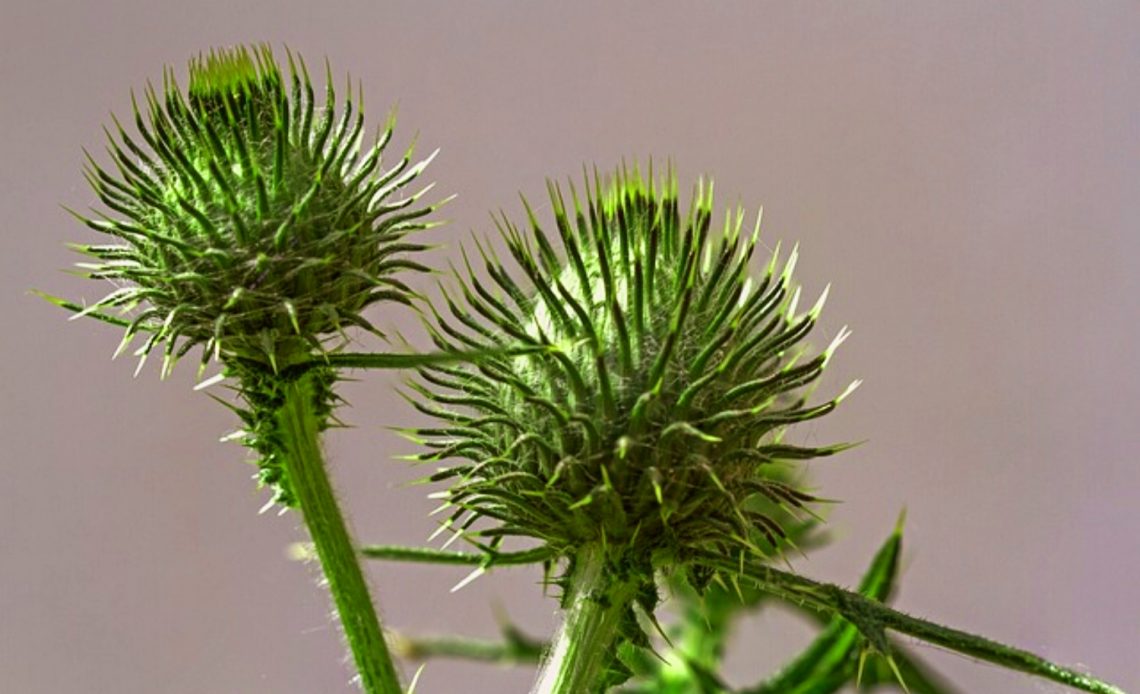

We’re here to help! Wild Yards is a completely free website that is 100% dedicated to helping you create a wildlife-friendly, sustainable yard. Read more
WildYards is reader-supported. When you buy a product through a link on our site, we may earn a comission. Every product is independently selected by our (obsessive) editors and our reviews are unbiased and objective. Read more about our mission or our privacy policy.
When they’re digging into your legs and getting stuck in between your toes, you probably don’t care what types of burrs are growing in your lawn — you just want them gone! Those annoying stickers lurking in the grass can make simply walking across your yard a nightmare. But knowing which types of burrs are growing in your lawn will help you figure out the best way to deal with them once and for all.
Burr medic, field sandbar, puncturevine, and yellow burr weed are a few of the most common types of burrs. These invasive plants grow best in poor soils but can be controlled with herbicides and by mowing regularly.
7 Types of burr weeds commonly found in lawns
If you’re tired of stepping on stickers on your lawn, then you’ve come to the right place. Grab some garden gloves and a magnifying glass, then go take a closer look at the burrs hiding in your grass. Do you have any of these 7 types of burrs growing in your backyard?
Burr medic
Burr medic is a trifoliate weed, which means it produces leaflets in sets of 3, so to the untrained eye, it looks a lot like clover. Although this plant is native to the Mediterranean region, it has become naturalized in many parts of the world, including the United States. These types of burrs can be found growing in zones 4 through 9, where plants thrive in sandy, nutrient-deficient soils and full sunlight.
Burr medic is actually a legume, which means it’s a nitrogen-fixer and can convert the nitrogen in the soil into a form that’s easier for neighboring plants to use — and that’s actually a good thing. Burr medic has oval-shaped leaves with toothed edges and red to purple stems. Plants produce yellow flowers from late spring to early summer, which are followed by round burrs covered in spines that easily get stuck in socks, pant legs, and animal fur.
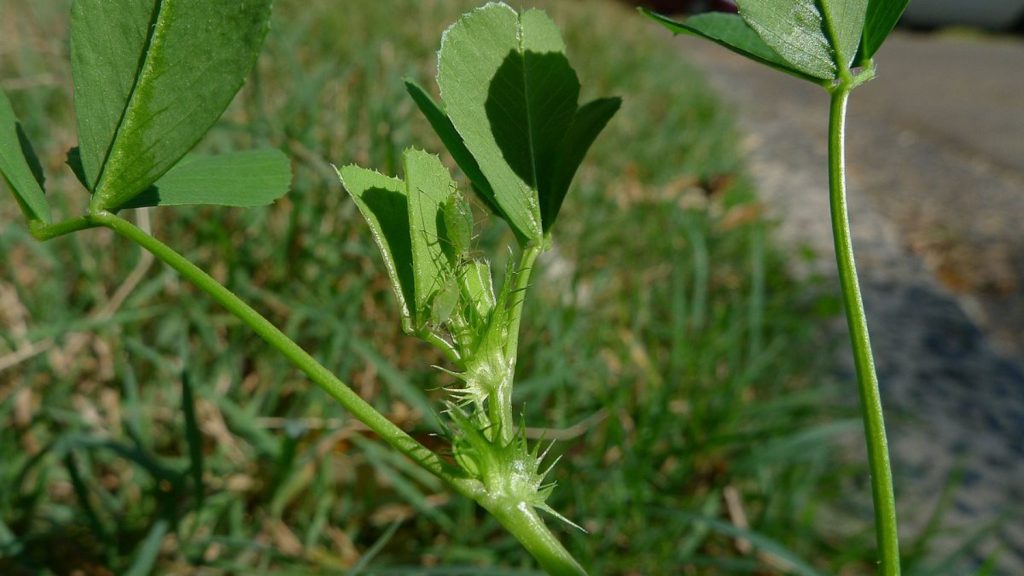
Field sandbur
Also known as southern sandspur or grass bur, field sandbur is a grassy weed that is native to North America, where it is commonly found growing along roadways and in pastures. Although field sandbur is hardy from zones 3 through 10, it is tolerant of hot, dry environments, so it spreads much more quickly in the south. Field sandbur grows best in nutrient-deficient soils, and can quickly overtake bare areas where nothing else seems to grow.
Field sandspur produces long grass blades from a central point, so it easily blends in with surrounding grasses. Plants bloom in summer, with their unremarkable flowers being replaced by clusters of jagged, asymmetrical burrs that start out green, but turn brown over time.
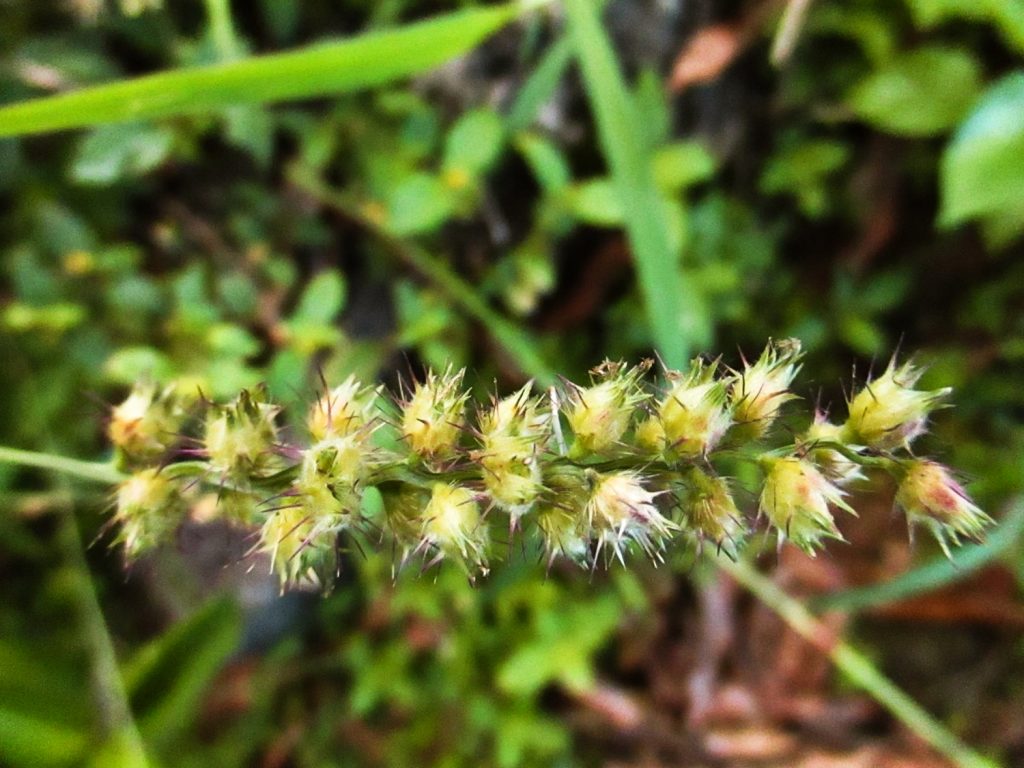
Puncturevine
Puncturevine is also sometimes referred to as goat head weed or cat head weed since its uniquely shaped burrs resemble (what else?) goat heads or cat heads. This plant is commonly found growing in warm, dry environments, and grows best in newly disturbed soils, so it often sprouts up in vegetable patches and raised garden beds.
Another native to the Mediterranean region, puncturevine grows from zones 2 through 11, which includes the vast majority of the continental U.S. Plants produce yellow flowers from late spring to early fall, which are followed by the plant’s iconic spiny burrs. Puncturevine is considered a noxious weed that quickly outcompetes other native plants.
Yellow burr weed
A member of the family Asteraceae, which also includes sunflowers, daisies, zinnias, and coneflowers, yellow burr weed originated in South America, but can now be found in North America as well, typically in the southern states. Yellow burr weed is highly invasive and can bloom throughout the year, reaching its peak in midsummer and fall.
Yellow burr weed is highly adaptable, growing well in sandy and loamy soils alike. These plants are allelopathic, meaning they release toxic compounds into the surrounding soil designed to prevent other plants from competing with them for space. Yellow burr weed produces spiny burrs that can be painful to step on.
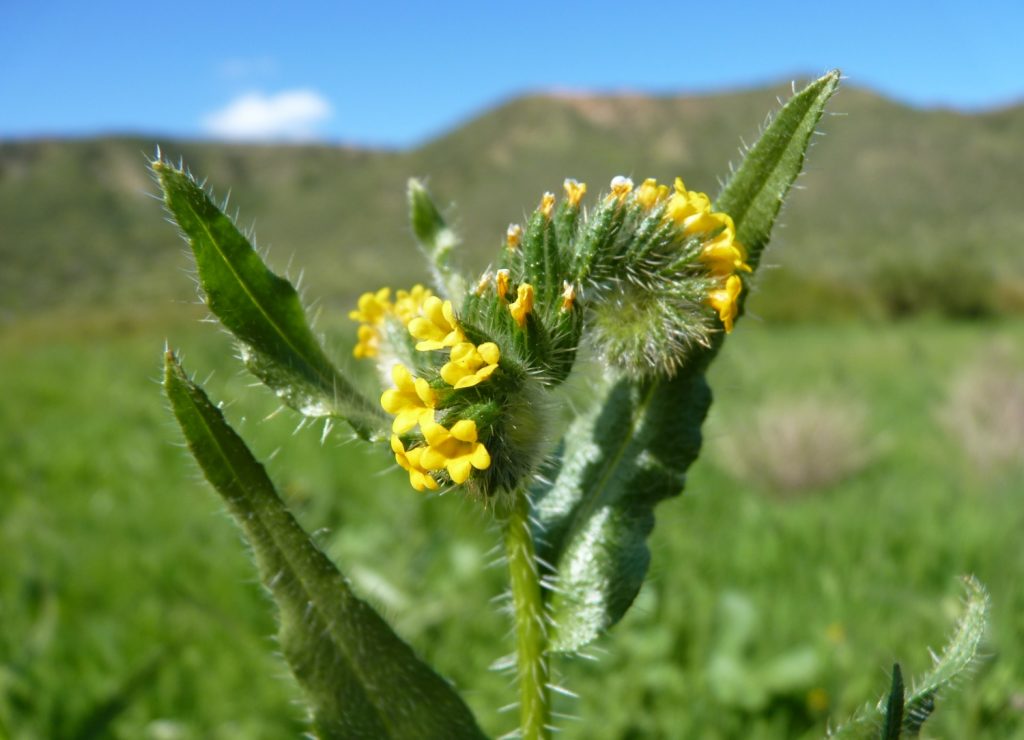
Cocklebur
An annual weed, and another member of the Asteraceae family, cocklebur grows best in moist, fertile soils, and can tolerate partial shade to full sun. Cocklebur can be found anywhere from zones 3 through 10, often lining roadways, growing in pastures, and sprouting up in freshly tilled soils. This type of burr weed is native to North America but has found its way to Europe and Asia, where it can give homeowners headaches on a more global scale.
Cocklebur blooms from late summer to early fall, producing green to yellow flowers that are hardly noticeable. This allows cocklebur to go under the radar until plants begin producing their irritating spiny burrs. Cockleburs embed themselves into animal fur and clothing to be transported to new locations and can remain viable in the soil for several years, waiting to germinate until conditions are ideal.
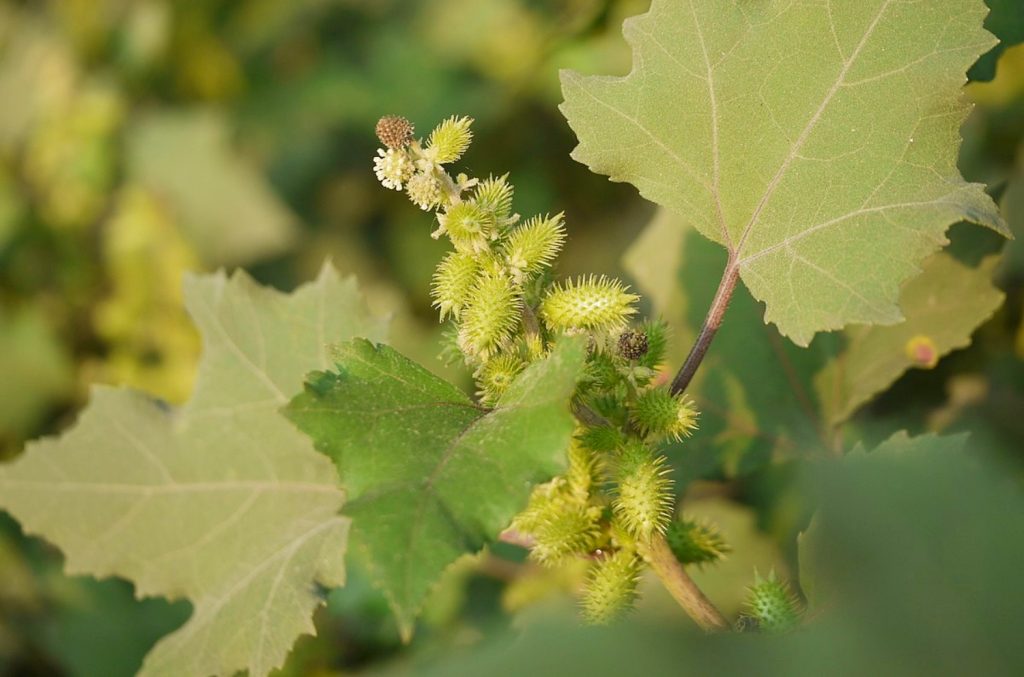
Buffalo bur weed
The only good thing about buffalo bur weed is that it’s pretty easy to spot. These tall weeds are covered in spines from the root collar to the uppermost leaves. And, as if that weren’t enough when the plants are finished producing their bright yellow blooms in late summer to early fall, the flowers are replaced by prickly spines that are painful to the touch.
Buffalo bur weed is typically found growing in zones 4 through 11, where it thrives in sandy loam soils and in full to partial sunlight. A member of the nightshade family, buffalo bur weed is native to North America and can be poisonous if ingested.
Sticktight
This burr weed can grow up to 3 feet tall and is usually found in pastures and fields. Sticktight is native to Central and South America but has spread to other parts of the world where it grows in full to partial sunlight. Sticktight produces bright yellow flowers from summer to fall, which are replaced by tiny barbed seeds that get stuck in animal fur and pant legs.
Sticktight can be found across the majority of the continental United States. Plants grow from zones 2 through 11 and can spread at an alarming rate. Sticktight is considered to be a noxious weed due to its ability to outcompete native vegetation.
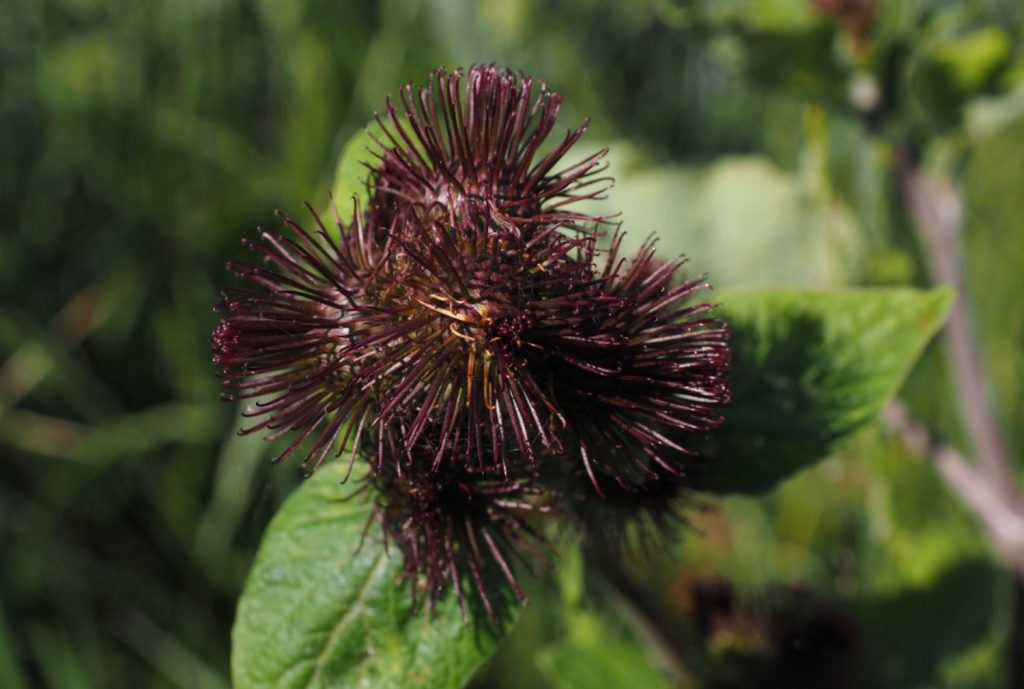
How to eliminate burrs from your lawn
Regardless of which types of burrs are growing in your lawn, all of these plants are invasive. The burrs themselves can be carried miles away, which means a single plant has the potential to create hundreds of new plants at a great distance from their starting point. If you’re fed up with the burrs growing on your lawn, it’s time to take action. Here’s what you can do to get rid of all types of burrs.
Remove them by hand
If you’ve only got a small patch of burrs growing in your lawn, then removing them by hand is a great first step. Use a weed fork, hoe, and/or a spade to dig the plants up, removing as much of the root systems as possible. Be sure to wear long sleeves, long pants, and thick gloves when removing the plants. It’s best to uproot burr weeds before they’ve gone to seed, so as not to accidentally release them when trying to remove them.
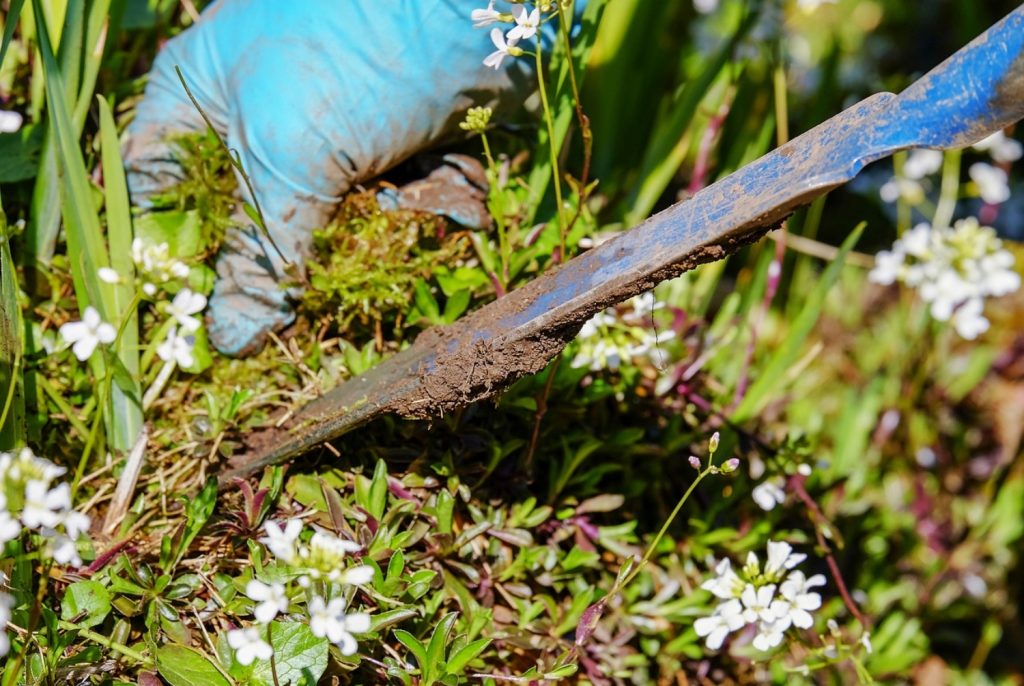
Use an herbicide
Pre-emergent herbicides can neutralize the seeds of certain weeds before they get a chance to sprout. They’re one of the most effective means of eliminating all types of burrs. Unfortunately, they have no effect on weeds that have already sprung up. If you want to kill preexisting weeds, use a post-emergent herbicide to kill off the plant above the ground, and to destroy the root systems below the ground, too. If chemical herbicides aren’t your thing, then consider pouring boiling water over the weeds, instead.
Mow regularly
This easy trick may sound too good to be true, but simply moving over many of these weeds regularly is often enough to prevent them from going to seed in the first place. Because most types of burr weeds are annuals, preventing plants from producing seeds is enough to control them, and the plants will die on their own in due time. A good rule of thumb is to mow the uppermost third of the grass to stimulate healthy new growth and to keep weeds at bay.
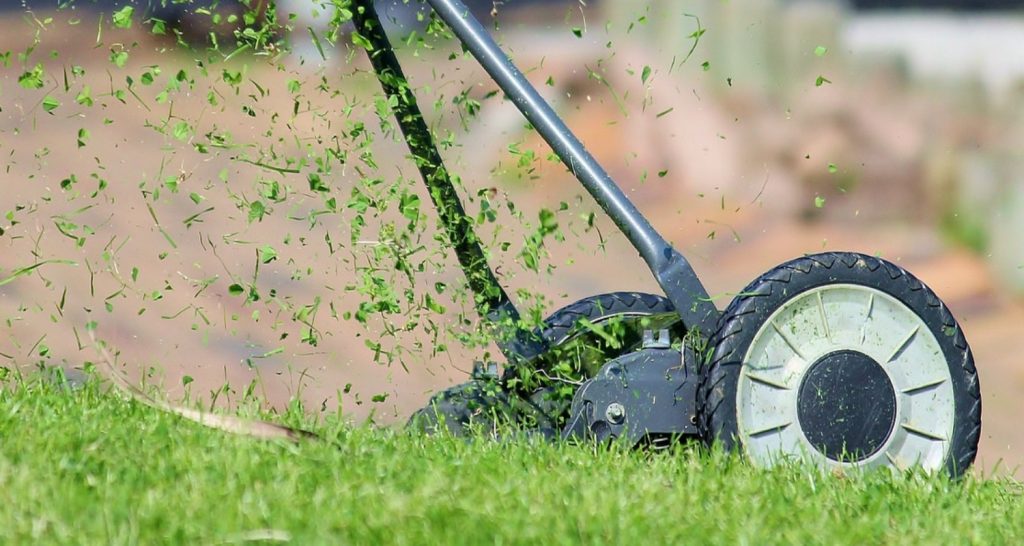
Fertilize your lawn
You probably noticed that most types of burrs grow best in nutrient-deficient soils. By making your soil more fertile, you’ll be creating an inhospitable environment for many of these weeds, while also nourishing your grass so it can create a dense carpet that easily chokes out stickers and other plants. Test your soil twice a season to determine which fertilizer will work best for your lawn. Applying balanced fertilizer like 19-19-19 one to three times a season can help eliminate and prevent the spread of all types of burrs.
More tips for eliminating burr weeds
Soaking the soil before removing burr weeds from your lawn makes the plants much easier to uproot. Once an area is clear of burr weeds, spray vinegar to discourage them from sprouting again. Mulch is also useful in preventing burr weeds (and other kinds of weeds, too) from growing. With consistent care and a few preventative measures, you can eliminate all types of burr weeds from growing in your backyard.

I need help on how to get rid of Burr weeds permanently, if that is possible
Hi Luis! Unfortunately, burr weed is resistant to many natural weed removal methods. It’s best to treat it with herbicides. To get rid of burr weed for good, you’ll need to apply a pre-emergent herbicide in late fall to kill off any seeds the weeds have dropped. This will prevent the weeds from spreading. You’ll also need to apply a post-emergent herbicide as a spot-treatment as necessary during the spring and summer to eliminate the weeds themselves. Mowing regularly will also help you keep burr weed under control by preventing the weeds from going to seed. Additionally, fertilizing your lawn with a high-nitrogen fertilizer, like 34-0-0, will help the turf snuff out the burr weed on its own. It may take you a few seasons, but with persistence and patience, you should be able to get that pesky burr weed under control. Thank you so much for your question, and good luck gardening!